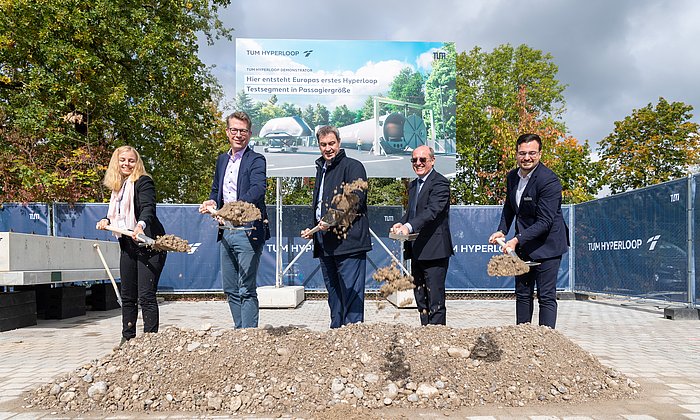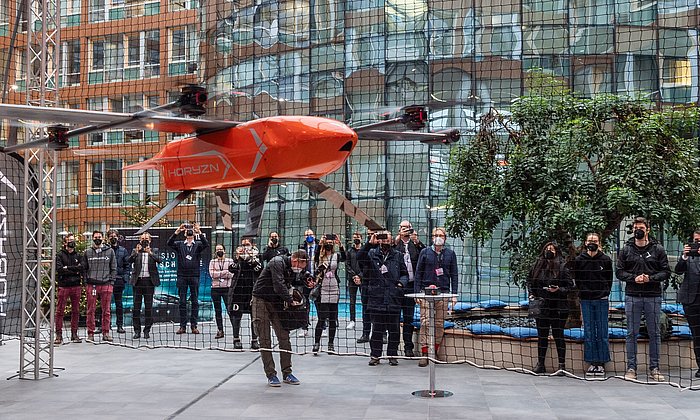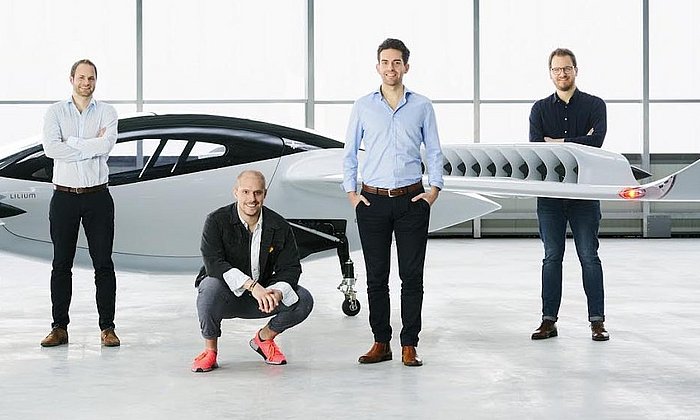German Federal Minister for Transport Wissing praises TUM Horyzn team at mobility conference
Drones and air taxis: The key to the air traffic revolution
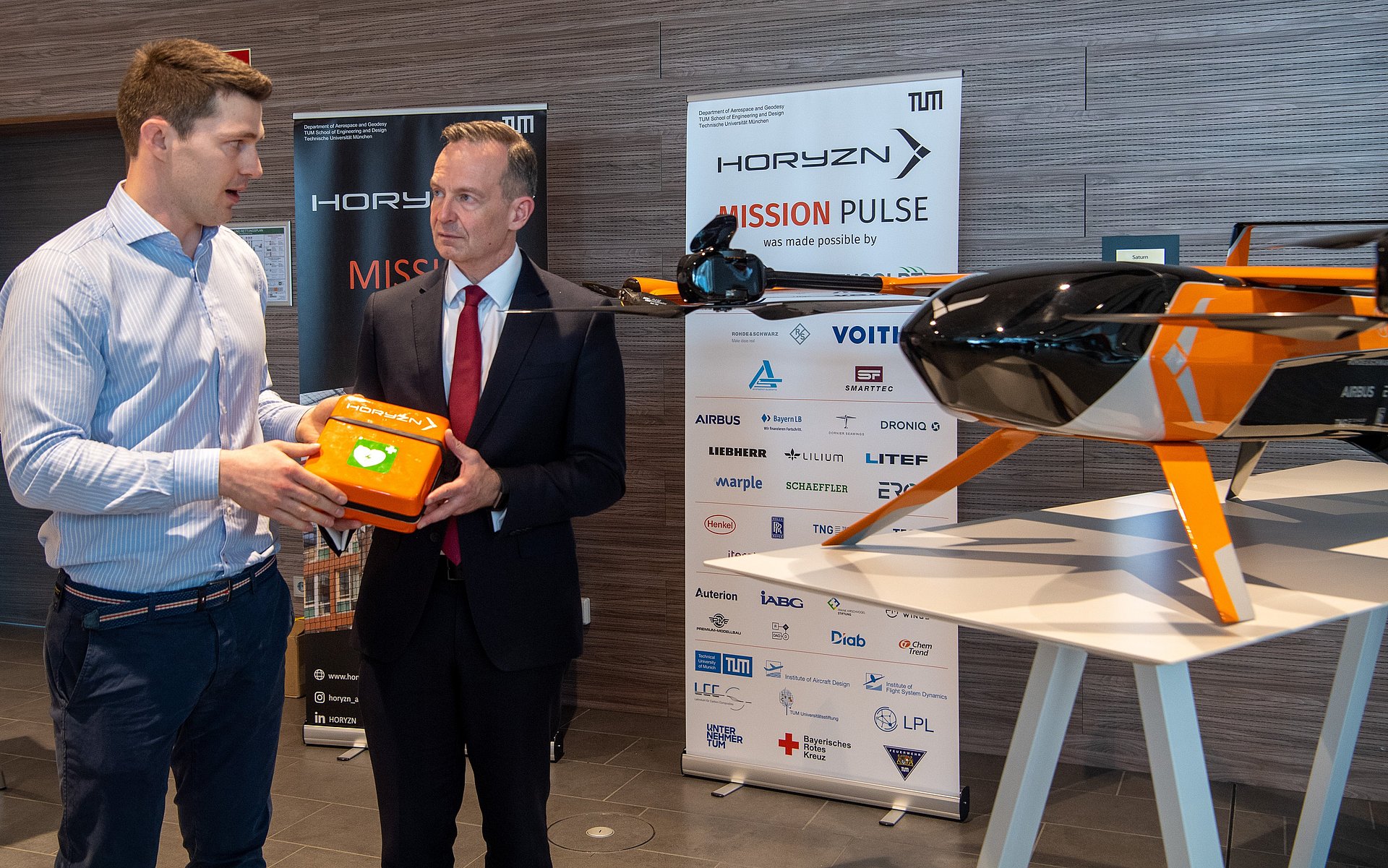
Air taxis and unmanned drones can transport people and goods quickly and precisely to the desired destination – an enormous potential for society and a wide-open space for innovative ideas. At the specialized conference "Expanding Horyzns" industry representatives, scientists and political representatives discussed the challenges which remain to be mastered in the drone sector. In addition to increased support from the political sector, the industry would like to see bolder investment in this field. The student initiative Horyzn organized not only the conference but also a demonstration of its defibrillator drone "Franky" at the TUM campus in Garching. The drone can quickly deliver a defibrillator to persons in remote and hard-to-reach areas in case of cardiac arrest, thus filling in during the sometimes lengthy period it could take for emergency responders arrive.
Germany offers large potential for the drone industry
However, a lot will have to happen before people in German cities really see passenger and cargo drones flying overhead. More than anything the manner in which young companies are financially supported should change significantly in the near future. "The international competition receives both civil and military subsidies, something which Germany has yet to initiate. We can do a lot for local tech start-ups in Germany by changing access to existing financial reserves so that they can also be made available to start-ups," Lilium co-founder and TUM alumnus Daniel Wiegand said at the congress.
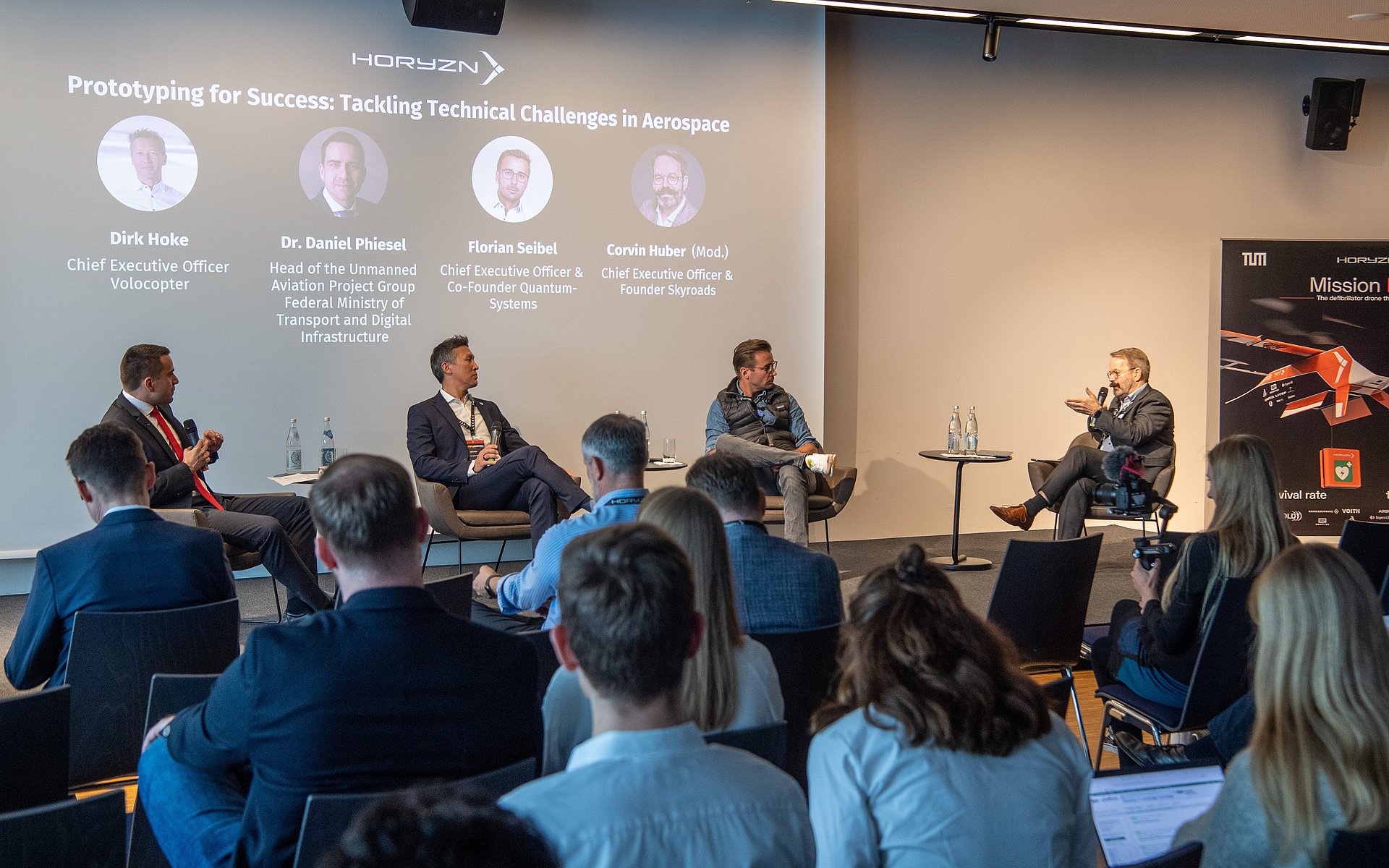
Staying competitive in terms of hardware
In addition to the necessary financial resources, Artificial Intelligence and high-end software are elementary building blocks in the development of drone systems. For unmanned aircraft in particular, software and hardware have to be closely linked in order to ensure secured operation and use in difficult terrain. Important hardware components are however for the most part manufactured in foreign countries; Volocopter CEO Dirk Hoke expressed some criticism: "We in Germany are slowly but surely falling behind our international competitors. We have to start building elementary systems such as batteries and propulsion here in Germany again. And we have the potential: The way I see it, Germany still has the best engineers in the world."
Political sector announces support
During "Expanding Horyzns" German Federal Minister for Transport Dr. Volker Wissing announced more support for the development of drone systems. He also congratulated the TUM student team on its achievements to date: "We want to make it easier and safer to use drones in Germany. Drones have an enormous potential to alleviate traditional traffic flows and to facilitate climate-friendly mobility. Drones are well suited for short-haul transport, just as well as for transporting goods to hard-to-reach locations. The Horyzn project is an impressive illustration of the fact that drones can save lives. My sincere congratulations go to the entire team."
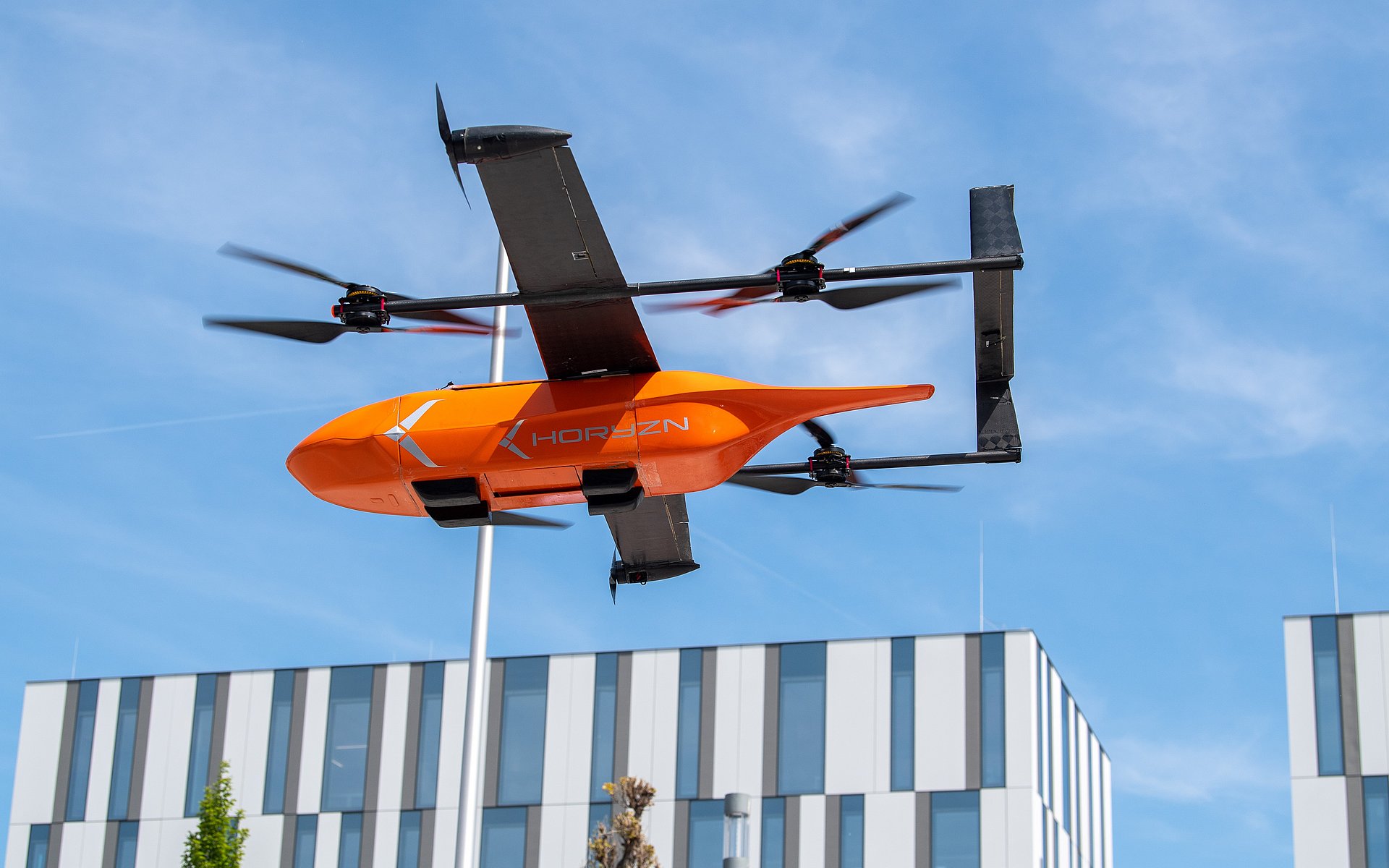
Horyzn consists entirely of students
As the organizer of the conference, the student initiative also took the opportunity for a look at upcoming projects. Horyzn currently consists of approximately 80 students from a variety of fields. TUM and several of its chairs and professorships support the group's efforts, among other things with workspace. Horyzn has already gained extensive experience with its defibrillator drone and has built over 25 prototypes since its founding. The team's future drone generations will concentrate on more payload capacity and an expanded mission scope.
Projectwebsite of Horyzn: https://horyzn.org/
Pictures for editorial use: https://mediatum.ub.tum.de/1709066
Technical University of Munich
Corporate Communications Center
- Andreas Huber
- huber.a@tum.de
- presse@tum.de
- Teamwebsite
Contacts to this article:
Balázs Nagy
Projectlead Horyzn
balazs.nagy@horyzn.org
https://horyzn.org/
